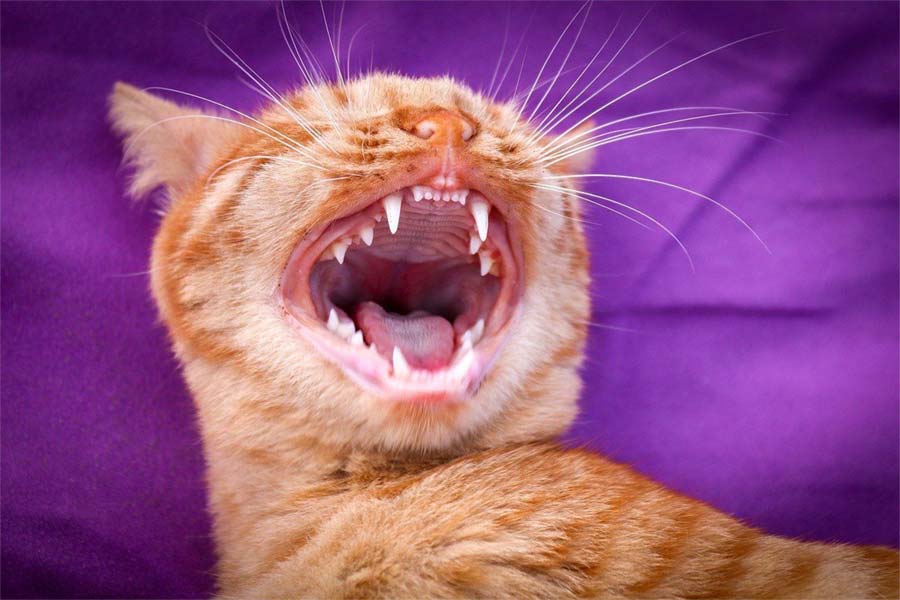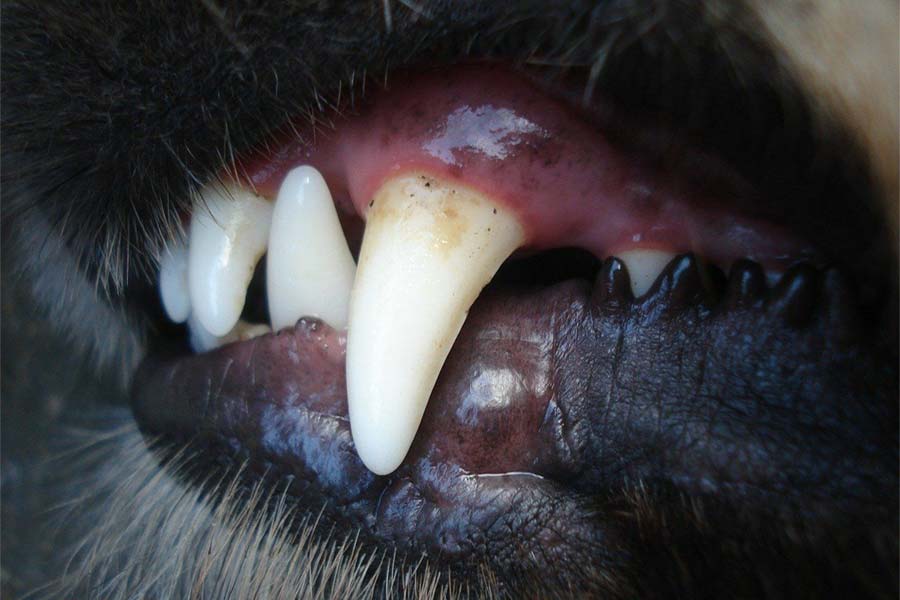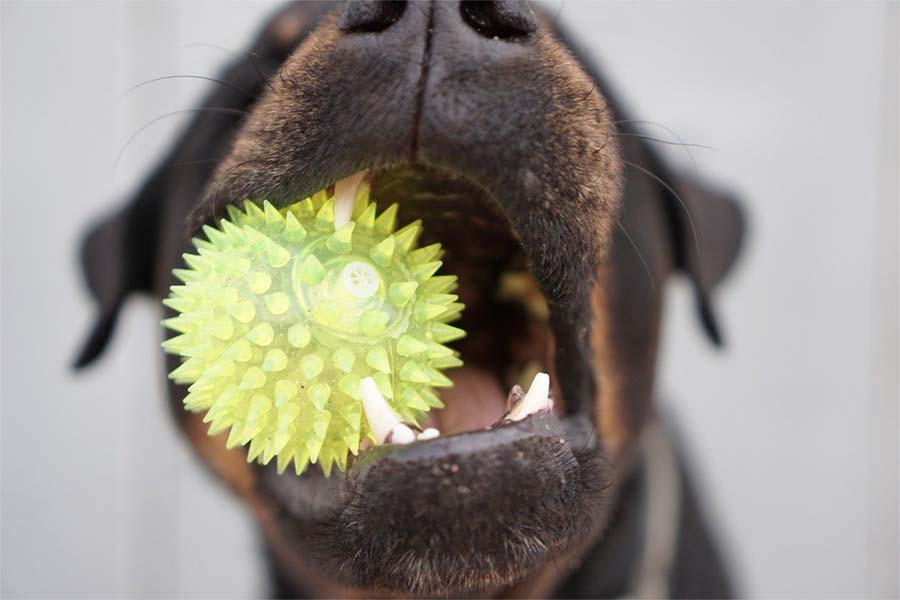Pet Dental Health Facts and Fiction

February is Pet Dental Health Month, so this month’s blog is focused on the facts and fiction of Pet Dental Health. Dental disease is one of the most common health issues facing our pets, and it is one of the most preventable diseases we encounter. As Veterinarians we strive to educate our clients about the best ways to keep our pets healthy and this month we are focusing on their teeth.
Fiction: Dental disease is only a problem of older pets.
Fact: According to the American Veterinary Medical Association, 80% of dogs and 70% of cats show signs of oral disease by the age of 3.
For this reason, it is important to start early with regular oral exams, teeth brushing and professional cleanings. Your veterinarian should do a routine oral exam with your pet’s annual check-up and give recommendations if there is anything of concern. We know that genetics play a role in dental health so even very young animals can be suffering from serious dental disease and should be assessed regularly.
Fiction: It is impossible to effectively brush my pet’s teeth.
Fact: Brushing your dog’s teeth daily will greatly improve their dental and overall health.
With some patience and finding the right combination of products or techniques, you can be successful at brushing your pet’s teeth. The key is to not force anything on your pet. Take your time and make sure that it is a calm, enjoyable experience. Using flavoured dental wipes and or treats may help in the process. If something isn’t working, stop and give your pet a break then try a different approach. It may take some trial and error, but persistence pays off and you should find a system that works for you. For more helpful hints on teeth brushing check out our previous blogHow To Save on Dog and Cat Teeth Cleaning.If you are still having problems pleasecontact usand we would be happy to help give you advice on brushing your pet’s teeth. We can also give you advice on other teeth cleaning products. There are many products on the market but don’t waste your time on ones that have not been scientifically proven to be effective.

Fiction: I can save money and get just as good results with non-anesthetic dental cleanings and they are better for my pet because they do not involve risky anesthetics.
Fact: Dental cleanings under anesthetic by a veterinary professional are important for optimal dental health.
Proper dental cleanings should always be performed by a veterinary professional and should be done under anesthetic. Without proper sedation it is impossible to get a proper dental exam, good X-rays, and you cannot clean tartar from under the gum line. Non-anesthetic dental procedures are only really cosmetic procedures as they only remove visible tartar. The tartar that remains under the gum line allows for further progression of infection while the owner feels a false sense of security that their pet’s teeth have been adequately cleaned. Although there are risks associated with anesthesia, the risks are actually quite low. Your veterinarian will work with you and your pet to assess their actual risks and make recommendations based on your pet’s health history. The take home message is that you will not save money or improve your pet’s dental health by subjecting them to non-anesthetic dental cleanings. ThisCBC News Storytouches on some of these points.
Fiction: I would know if my pet had a serious dental problem or painful mouth.
Fact: Serious dental disease is often present despite not being easily identifiable by the naked eye.
As veterinarians, we can identify outward signs of dental disease like gingivitis (inflammation of the gums) and tartar build up but we cannot accurately predict how much dental disease is present in a pet’s mouth until after we have done a thorough exam and X-rays under anesthetic. The outer portion of the tooth may look normal, but the root of the tooth can still be infected and diseased. On top of this, pets can be very good at hiding their discomfort. We often see situations where pet owners didn’t realize how much their pet’s teeth were bothering them until after they have recovered from a dental. Owners come in to tell us their pet is eating better, more playful or seems much younger. We encourage owners to watch for the following signs of dental disease; bad breath, drooling, reluctance to chew food or toys, dropping food, swelling of gums or areas around their mouth, bloody discharge from the mouth or gums and broken or loose teeth. If you identify any of these signs in your pet,please contact your veterinarian for a dental examination.If you don’t see these signs, please don’t make the assumption that your pet has healthy teeth and make sure you have their teeth assessed by your veterinarian at theirannual pet health exam.

Fiction: My pet can live with bad teeth, it just gives him/her bad breath.
Fact: Dental disease has been linked to other systemic diseases like heart and liver disease.
There are studies to show that dental infections can be linked to problems in other organs of the body. Dental infections that go unchecked can become blood born and be identified in other organs like the heart and liver. These infections can cause heart valve problems and inflammation of the heart or liver. Diabetic animals can also have trouble regulating their blood sugars when there is concurrent dental infections. So, caring for your pet’s teeth is important for their overall health, not just their oral health.
Fiction: I just give my dog bones and chew toys to chew on and that naturally cleans his/her teeth.
Fact: When a dog chews on something hard their teeth do scrape up against the object but there is limited benefit from a teeth cleaning perspective.
In fact, we often see broken teeth from chewing on hard toys or bones and that causes pain as well as opening the tooth up to infection. We advise against giving hard bones and toys to your dog to chew. There are some products out on the market that have been scientifically proven to help clean the teeth, but they are not meant to replace daily brushing and regular teeth cleanings. TheVeterinary Oral Health Council (VOHC) is an independent group that tests the efficacy of these products. If you are looking for a treat or chew to help with tooth brushing, make sure it has a VOHC label on it so that you know it has been proven to work. There is also a special food that has been designed to clean your pet’s teeth as they eat. It is called “t/d diet” and has VOHC approval.

The relationship between good oral health and overall health have been well known in human medicine for a long time. Our pets are no different. I don’t think twice about brushing my teeth daily or getting my teeth cleaned at the dentist because I know how uncomfortable a tooth infection or problem can be. Many of our pets are living with that discomfort daily, they are just better at hiding it. February is Veterinary Dental Health Month so take some time this month to consider the health of your pet’s teeth. If you have concerns or questions,please call your veterinarian or bring your pet in for an exam.